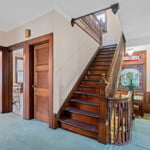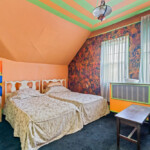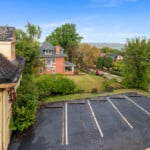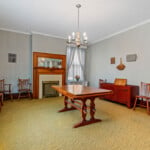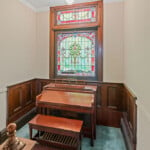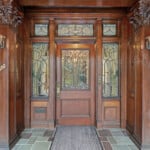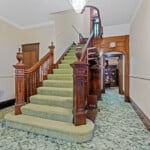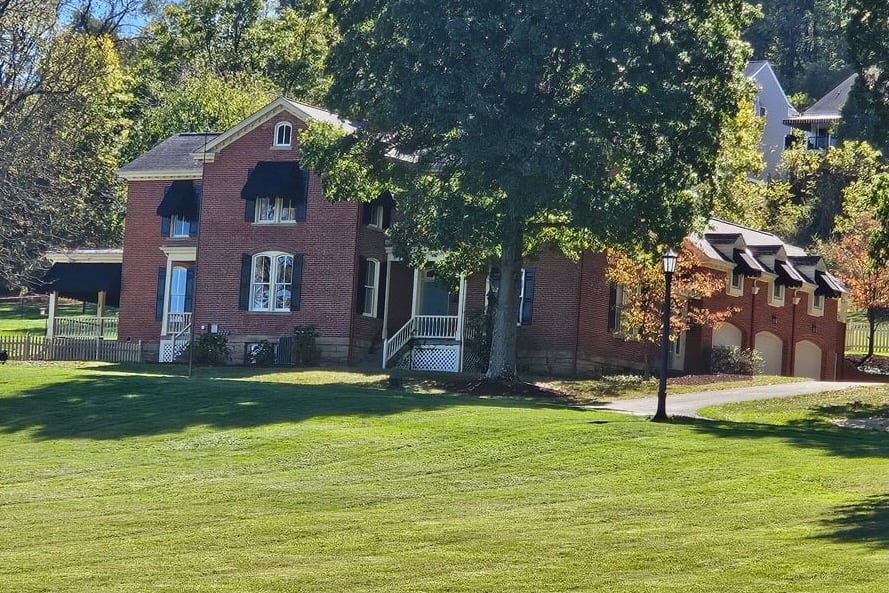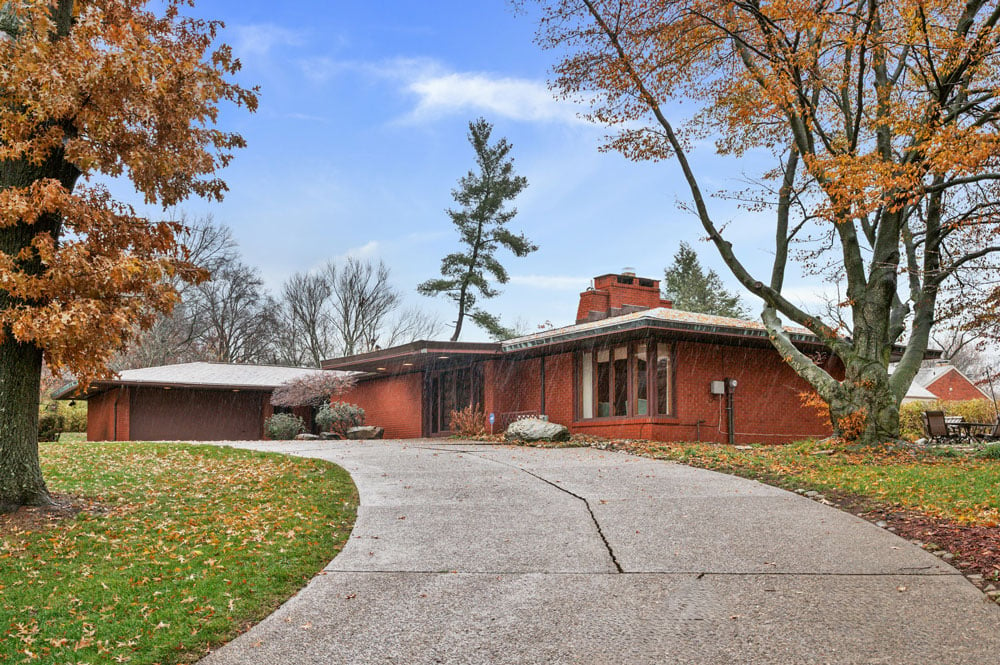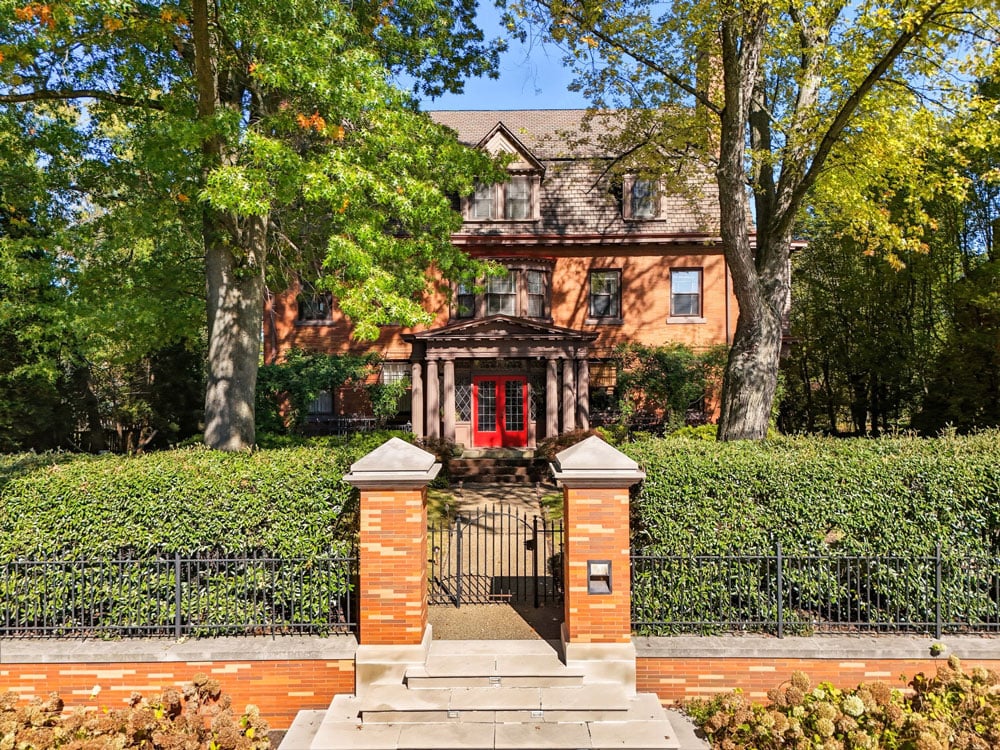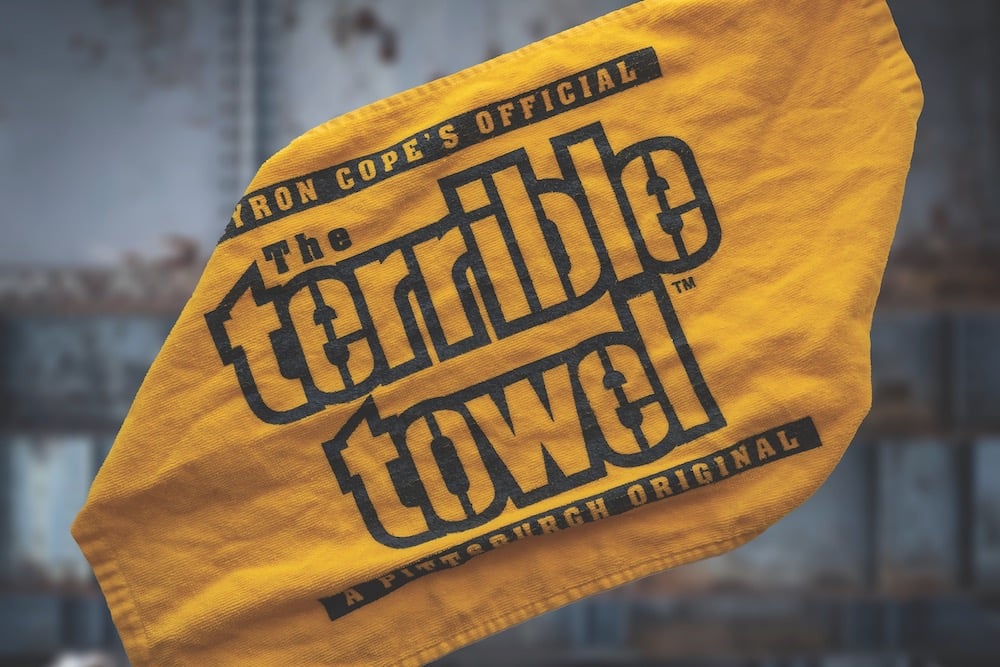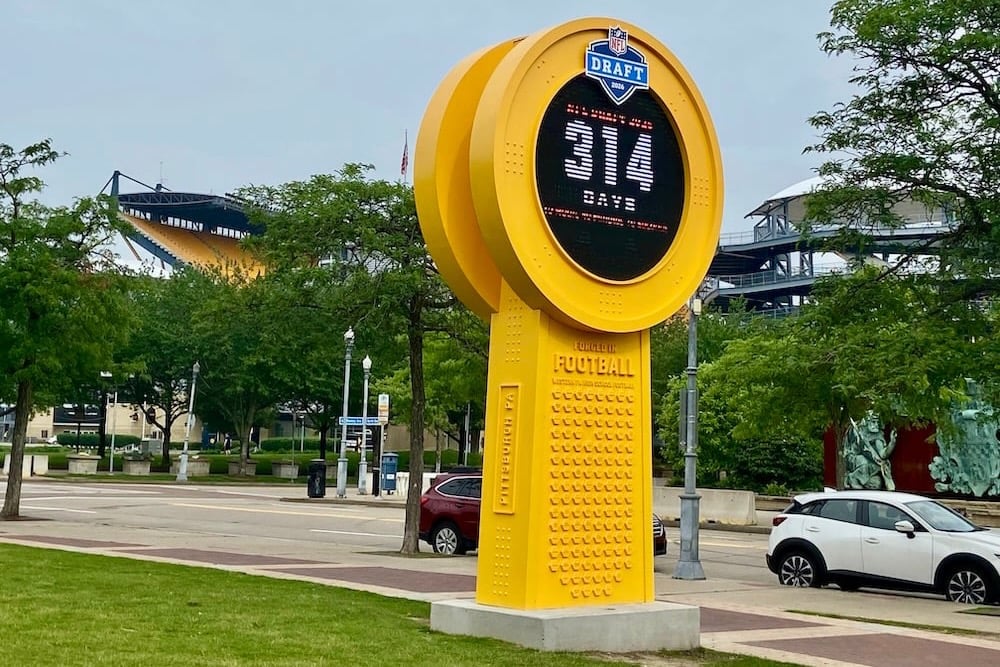A Grand Funeral Home Turned Residence — But It’s Not Spooky
The palatial brick property in the heart of McKeesport's historical Library Manor district comes at a bargain price for the right buyer.
In 1955, Bill Hunter’s grandfather, W.W. Hunter, came across 1600 Coursin St. in McKeesport and had a vision; he wanted to turn it into welcoming space for members of his community to both mourn their loved ones and celebrate lives well lived.
With that, he purchased the palatial brick home and began making plans to turn it into a funeral home.
Hunter’s grandfather was not new to the funeral industry; Before purchasing the ornate Coursin Street manse, W.W. Hunter had been co-owner of a different funeral business in McKeesport. Hunter himself is a fifth-generation funeral director, and his daughter has also pursued work in the same field.
“Our family had a funeral home at the corner of 6th and Market since 1866,” Hunter says. “They had a livery stable that rented carriages for funerals and weddings, which kind of just melded into… taking care of families. At that time, many people had visitation in their homes, so a funeral home was just an office where people went to make arrangements.”
As it became less common to hold funerals at home, W.W. Hunter wanted to purchase a property that could handle meetings, embalming and host viewings all at one location. The Coursin Street property, which had been built in 1902 by a prominent local doctor who used the first floor for his practice, seemed designed to accommodate the changing needs of the funeral industry.
Many years later, Hunter, then 8, moved into the property with his two siblings, Frank and Sue Ann, as his parents took over the business.
“It wasn’t creepy, I can tell you that,” he says. “We did have to be quiet at certain times, and we had to use the back stairs rather than the front stairs, but it was quite interesting growing up there.”
Throughout the years, Hunter became interested in the history of the home. While some stories were passed down from others in the community, he also did research at the local Carnegie Library.
“The house was built by a Dr. Gardner, who lived there with his wife and daughter,” he says. “The home was built with no electricity, so they used gas lights and had gas mantles to heat the home.”
The Gardners were the ones who built the carriage house, which they later expanded to include a chicken coop, and added a solarium in an attempt to treat their daughter’s tuberculosis. Hunter also discovered the home was built on the remnants of the Evans Farm, which was later donated to the town for the construction of the same Carnegie Library where he later did research.
Because of health issues, Hunter says he and his family have decided to list the building where they walked so many locals through some of their most difficult moments.
“I had planned to do it until the end, but plans change,” Hunter says.
The family has listed the home in the heart of McKeesport’s Library Manor district with Josh Verbantes of Duck Hollow Realty for $149,000. Many folks know Verbantes as a local musician and half of the popular kid-friendly duo Josh & Gab, but he jokes that he wears many hats.
“Duck Hollow Realty is my ‘Clark Kent’ side,” he says with a laugh. “My longtime friend and bandmate, Aaron Bubenheim, and his wife Pam founded the brokerage; we are a family-owned hometown alternative to a lot of larger brokerages.”
He adds Duck Hollow Realty prides itself on representing unique properties across the region.
“We have been lucky to help many artists and creatives in the region,” he says, noting the company has sold homes to at least five drummers in recent years.
Inside the former Hunter Funeral Home are five bedrooms and five bathrooms spread over three levels, as well as a functional basement and the separate carriage house. Some areas of the home are still set up for funeral work, though the home is no longer licensed for that business.
Throughout the first floor, which has been used as commercial space for much of the home’s history, ornate millwork and elaborate stained glass remain in impeccable shape. A grand central staircase leads up to the family living quarters, which are clean and functional — though the next owner may want to rearrange some rooms if they plan to use the home as a single-family residence. For example, there is no kitchen on the first floor.
“It’s a gorgeous mix of original details and usage possibilities on a beautiful street alongside other historic homes,” says Verbantes. “It’s a chance to own a turn-of-the-century mansion and carriage house for around $150,000 in Allegheny County. It might take a creative lender to make it work, but it’s really a gem.”
Verbantes says he is torn when asked to choose a favorite detail of the large estate.
“This would be a three-way tie between the grand staircase with its stained-glass landing window, the original dark woodworking in the dining room or the Paul McCartney screen print poster still on the 3rd floor bedroom wall from 1967,” he says.
Hunter, who adds he used the third floor as his teenage hangout, says growing up in the McKeesport community was a core part of his life, as his family has thrived there for generations. While the town has seen periods of prosperity and seasons of decline, the people are what make the community special, he says.
“I miss being with the families, there is no doubt about that. I loved meeting with the families and helping them out in their time of need,” he says. “After I saw how [the funeral home] helped people get through a traumatic experience, I never really wanted to do anything else.”
About: McKeesport
Population: 17,520
Planes, Trains, & Automobiles: Most residents of McKeesport own a car, though there are walkable portions of town. Access to Interstate 376 means Pittsburgh International Airport is about a 40-minute drive away, and there are multiple bus routes in the community as well. A commuter bus takes residents to Downtown on weekdays.
Schools: McKeesport Area School District (mckasd.net)
Neighborhood: Named for Scotland native David McKee, who settled in the area in 1775, McKeesport rose to national importance during the 1900s as a center for manufacturing steel. In 1901, the National Tube Company and nine other major American steel companies merged to form U.S. Steel. The city’s population continued to climb, reaching a peak of 55,355 in 1940. Like many Western Pennsylvania river towns, the community has seen the loss of retail and industry, initiated by the steel mill closures in the 1980s. Although the population is a third of its wartime high, McKeesport today is a diverse mix of races and nationalities, with local stakeholders invested in their town as well as maintaining the close-knit community. The city is known for its annual International Village, a three-day ethnic food festival featuring cuisines from across the world.


















